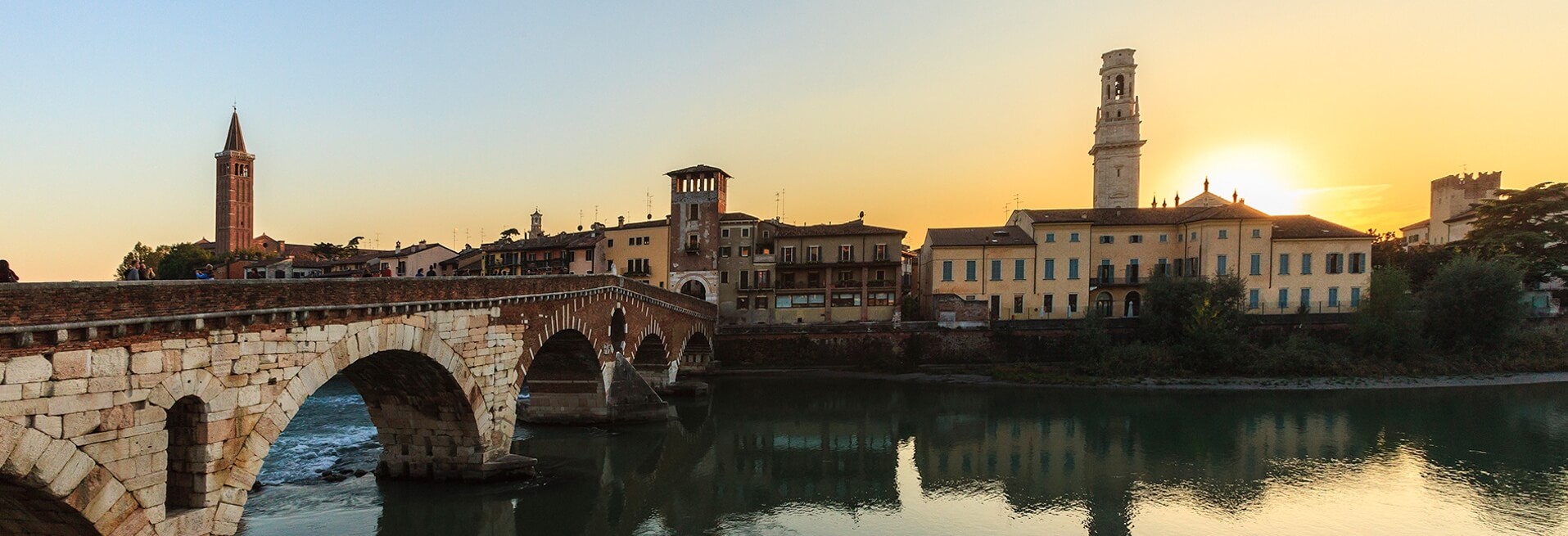Verona city of love
If you love someone bring him/her to Verona.
If you love someone...
Must see
Five walking itineraries
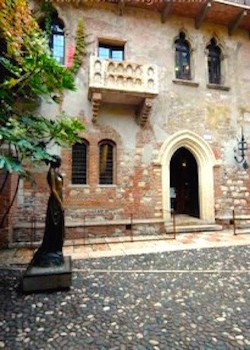
Romeo and Juliet
Is impossible not to get immersed in the compelling dramatic novel of William Shakespeare, the most famous love story of all time. Follow the steps of the famous locations of the two lovers, the house of Giulietta with her famous balcony, her grave and the house of Romeo are nowadays the major landmarks of Verona. Millions of tourists every year took the traditional picture next to the statue of the most loved Giulietta made by Nereo Costantini situated in the yard of her house. Verona holds the myth of love that lives in the eyes of its visitors where you can admire the ancient squares, alleys, shadowy courtyards, always new views are awaiting to be discovered.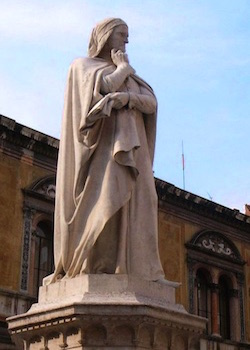
Art and culture
Verona is a real historical beauty that charms everybody and is one of the significant landmarks for tourists thanks to its artistic, architectonic and best-preserved monuments such as the Arena, the Dome, the beautiful squares and a beautiful amphitheater. Another reason to consider Verona as an attractive destination is for its annual events such as the lyric season or famous plays ( the city has more than 40 active theater companies) and the numerous concerts, spread in every corner of the city. Hometown of many famous artists: Catullo, Vitruvio; Michele Sanmicheli, Berto Barbarani, Emilio Salgari, Maria Callas and much more. Just a brief glance is more than enough to fall in love with it: its own historical and cultural heritage has conquered the hearts of painters, poets, travelers, and celebrities of all times. University city and actually the first recognized high school of Italy (1807) the conservatory (1878) and the most ancient music academy (known as Filarmonica) of the world. Verona is a treasure chest rich with beautiful art gems: history and heritage and cultures merge in a unique and stunning universe gifting you with an outstanding experience, all year long.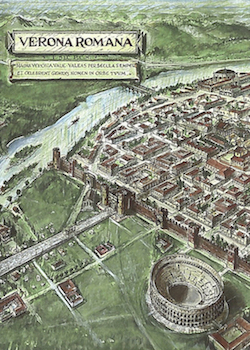
Historical facts
The majestic shapes of the river Adige pass around the hills granting a breathtaking landscape harmony. Due to to its geographic and strategic position has been known to be a history of an Etruscan and Euganean but the record of the first certain settlements are registered from the IV century B.C. During the Roman empire in the I century A.C Verona was a major business and political point of interest: from the Arena to the famous Roman theatre with Arco dei Gavi and porta Borsari. In the medieval times, exactly from the V century, the city was the capital of excellence for the Barbarians. Successively, during the XI century, Verona was in the middle of different internal conflicts, and the empire was acquiring its own independence as a region building Palazzo della Regione ( well known also as Palazzo del Comune the italian definition of city hall). In the Renaissance era, the city was ruled by the Scaligeri’s dynasty and reaches its major greatness from XIII and XIV century when the fortress known as Castelvecchio and its majestic walls. In the XV the city lost its independence and got controlled by the Republic of Venice, after the initial conflicts and internal tensions Verona got a quiet and flourished period of intellectual and cultural activities, becoming a must for a lot of famous personalities and artists like Goethe, Heine, Stendhal e Valery. After this beautiful and glorious period in the arts, the city becomes objects of conflicts by French and Austrian’s army that fortified the town building forts, towers, and bastions. Lastly, in 1866 Verona choose with plebiscite approval to become part of the Regno d’Italia ( Italian realm).Must see
There are a lot of places that are literally a must-see in Verona!
The most remarkable are:
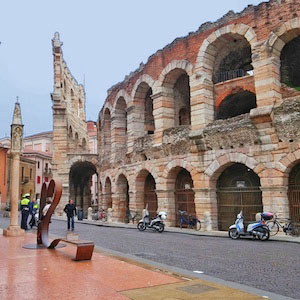
Piazza Bra e Arena
The square with extensive gardens is located in front of the Arena can be defined as “a pleasant surprise.” On one side the wide sidewalk named Listone, where anyone can find numerous coffee shop and restaurants in the new iron structures designed by the famous Zeffirelli. On the opposite side the magnificence of the Gran Guardia Palace, old building that sheltered the army for decades, now used exclusively for art exhibits and events. The main attraction is the Arena, the biggest open lyric theater in the world. Built in the I A.C principally for games and entertainment, had severe damages due to earthquakes and flooding, destroying the majority of its beautiful external ring. The first lyric play was registered in 1913 in honor of the centenary of the brilliant composer Giuseppe Verdi.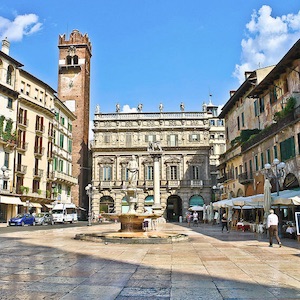
Piazza delle Erbe
From a recent studio by the Ferrari, the foundation has defined in 2012 the most loved square in the world; located in the ancient Roman Forum was at the time, the center of the economic and political atmosphere. Lately, the original Roman buildings have been replaced by the medieval ones. The most ancient monument is the fountain of Madonna Verona, built and placed in the heart of the square during the Scaligeri’s family empire, the statue was restored from the roman age. Next, to it, the capitol formerly known as Tribuna was a place used for swearing ceremonies and solemn investitures in the XIII century. At the edge of the square, the high figure of Maffei’s Palace introduces you to the San Marco column, easily to identify by its characteristic lion that symbolizes the Venetian Republic, all around you can enjoy beautiful historical buildings.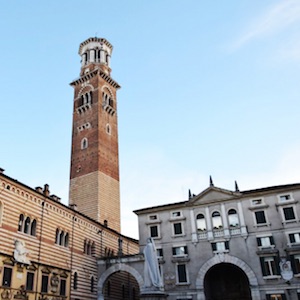
Piazza dei Signori
Known also as Piazza Dante cause of the statue dedicated to the famous Italian poet, that lived there for a period as a guest of Cangrande Della Scala. As the Scaligeri’s buildings this structure took immediately a role in the society for being used as political, administrative, and representative celebrations. Right next door il Cortile del Mercato Vecchio ( the yard of the ancient market) has a Venetian style stair called Scala della Ragione and the tower known as Torre dei Lamberti that offers from its top a breathtaking view of Verona. Additional to see is il Cortile del Tribunale where you can admire archeological sites and le Arche Scaligere, ancient monuments, and mausoleums dedicated to celebrating the magnificence of the royal family of Verona.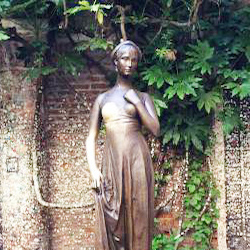
Balcone di Giulietta
The balcony of Giulietta is in the center of the medieval palace of Cappelletti’s family ( afterward changed into Capuleti). The design of the house has been renovated in order to re-create a medieval appearance in 1937 after the influence of the famous painting of the artist Hayez ( l'ultimo bacio di Romeo e Giulietta). In the private yard is possible to admire a bronze statue of Giulietta, realized in 1972 by Nereo Costantini, a traditional belief says that by touching it, grants you luck in love.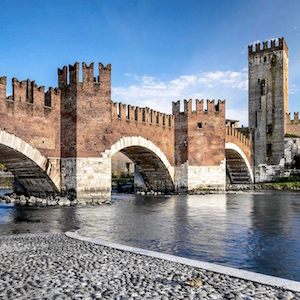
Castelvecchio
The ancient fortress of Castelvecchio with his bridge is the most famous building of the old Scaligeri’s family reign of Verona. Built in the middle of year 300 was formerly called with the name of Castello di S. Martino in Aguaro. This fortification always had a military based role till the artist Carlo Scarpa had the visionary idea of turning it into the most important museum of the city collecting and exposing the biggest collection of historical artifacts and objects of the town starting from medieval to the XVIII century.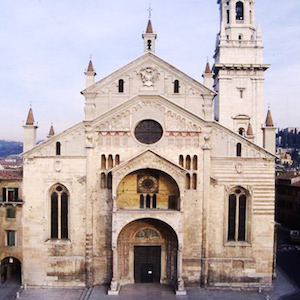
Duomo
The Dome initially called Cattedrale di Santa Maria Matricolare has been made around the IV century by Vescovo Zeno, was the first Catholic Christian church in town. In 1117 the dome was destroyed by an earthquake and had been rebuilt over the years. In the XVI century, several works had been done on the bell tower, but lately never ultimate. The interiors with three naves show due to reconstructions the influence of different art styles with a mix of Gothic, Renaissance and Baroque.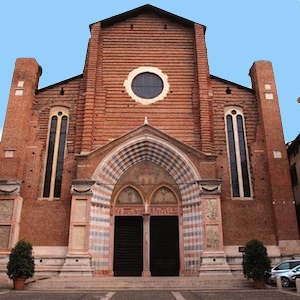
Chiesa di Santa Anastasia
Built in 1290, is the biggest church of Verona in Goth style, known formally as S. Anastasia has been renamed lately after the patron of Verona San Pietro. Inside you can admire a magnificent collection of altars, chapels, and urns, with characteristics holy water fonts that are supported by hunchbacked figures that symbolize the weight of the citizens involved in the construction of the building. Outside you can see the ancient Arca of Guglielmo from Castelbarco, memorial grave of an outstanding army leader, that inspired the making of the Arche Scaligere.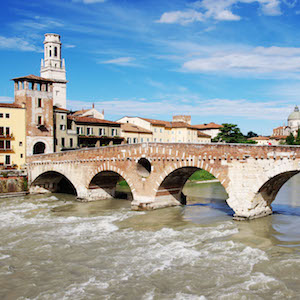
Ponte Pietra
The bridge, intentionally placed in a crucial point to connect all the major intersections, has been made at the same time with the construction of the old Via Postumia. Initially made of wood has been modified in the I century and replaced with a stone structure, and represents one of the most intact proof of ancient architecture in Verona. The bridge had different episodes of collapse in its long life, and has been rebuilt several times, on April 25th in 1945, has been blown with mines up by German troupes in retreat. In 1959 with the intervention and the cooperation of several professional experts ( engineers, history teachers, archeologists, technicians) the bridge was rebuilt in its greatness restoring and retrieving the old original stones that feel in the river Adige.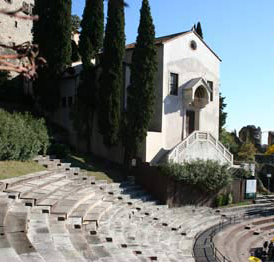
Teatro Romano
Considered the most famous Roman based theater of the north part of Italy, was built at the end of the I century on top of the hill of S. Pietro. The building has been rediscovered and fixed by the district of Verona only later on in the year 1800 after being neglected and damaged by natural causes and for several years was hidden under other types of constructions. The little church of SS. Siro was revamped to its ancient glory. The city archeological museum is right next to it. In the summer time, this unique and remarkable stage opens to the public with open air art performances from ballet to comedies and concerts (La rassegna Estate teatrale Veronese).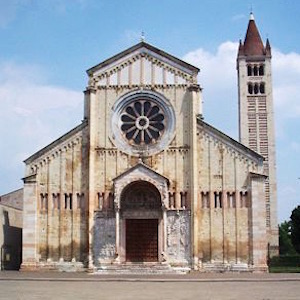
Basilica di San Zeno
The basilica of S. Zeno, one of the masterpieces of classical art in Italy, is dedicated to the patron of Verona, originally from North Africa that lived in the IV century. One of the many important details is the facade with the rose window that symbolizes the wheel of fortune and the romantic front door with 48 bronze tiles that describe the different moments of the saint’s life. Indoor you can enjoy the famous altarpiece by the painter Mantegna, wooden paint of the Renaissance with the Holy Mary and the baby surrounded by several saints; another art piece to see is the picturesque statue of S. Zeno che ride which remains are preserved in the crypt located under the altar. Another thing to see is the cloister with a beautiful garden.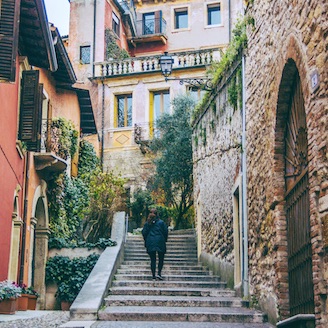
Scalinata di Castel San Pietro
A nice walk along the stairs of S. Peter Castle, which starts from the buildings situated in front of Ponte Pietra, goes uphill from the side of the roman theater till the terrace of the castle that offers a beautiful view on the ancient Roman remains and a panoramic view of the city of Verona. The palace built on ancient tactical settlements is unfortunately not open to the public.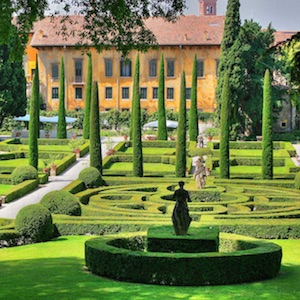
Giardino Giusti
This garden is considered and cataloged in one of the 10th most beautiful Italian-style garden of the 500 era in Europe. The entrance is along the street through a doorway that opens on a marvelous scenario of relaxing and natural beauty, just a few steps from the Arena. The Giusti’s garden is going to offer a magical blend of nature and history, with an excellent collection of flowers, artifacts from the Roman empire and a grand cypress avenue, fountains and acoustic caves. A trail of art, nature, and history that is going to take a couple of hours of your time and gives you the possibility to admire a charming view of the city from its panoramic terrace.Itinerary
In the Agriturismo, you will find peace and serenity but also a warm hospitality and a lot of attentions.
We thought five trails and directions for helping you in having the best experience during your stay in our beautiful city.
Instructions
All the suggested trails start from a comfortable parking lot (designated by the symbol P) eachable from the Agriturismo that will make you avoid the traffic of the city.The five itineraries are all different and ready to be discovered. The minutes that we use are intended without stops or additional visits. The total experience will depend on your spirit of adventure and curiosity, be careful and plan accordingly with time cause it can easily take an entire day away!
We surely hope that your stay in Verona will be longer, but if you don’t have so much time, choose carefully the best route:
from a quick overview of the center or a relaxing experience away from the urban feeling, through great streets, cured gardens, and charming landscapes.
Whatever your choice may be, Verona will always surprise you and leave in your heart remarkable memories.
Quick trail
Google Maps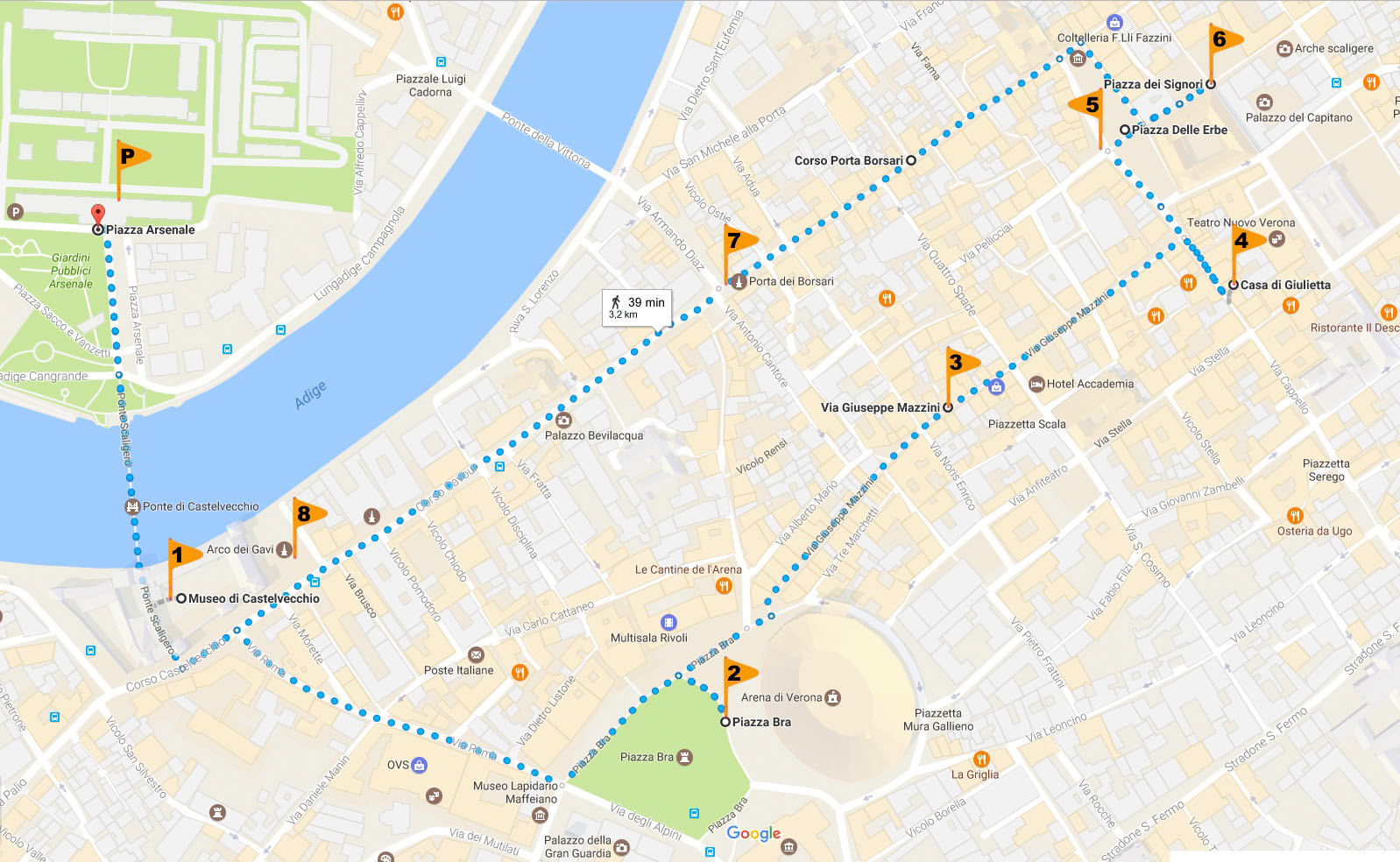
P
Parcheggio Arsenale
1
Castel Vecchio
2
Piazza Bra e Arena
3
Via Mazzini
4
Casa di Giulietta
5
Piazza delle Erbe
6
Piazza dei Signori
7
Porta Borsari
8
Arco dei Gavi
Main Squares
Google Maps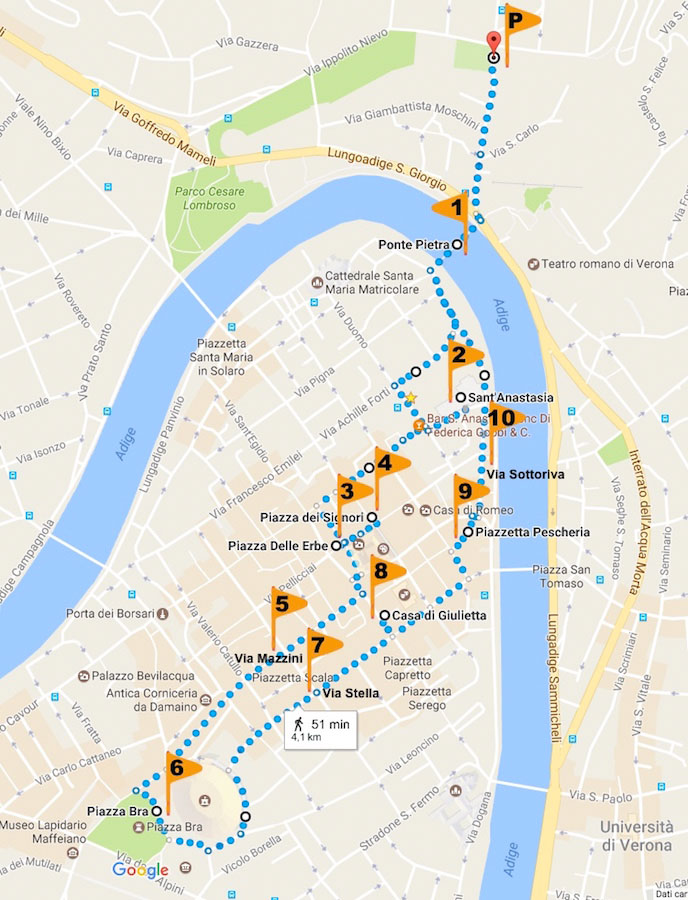
P
Parcheggio gratuito
1
Ponte Pietra
2
Santa Anastasia
3
Piazza delle Erbe
4
Piazza dei Signori
5
Via Mazzini
6
Piazza Brà
7
Via Stella
8
Casa di Giulietta
9
Piazza Pescheria
10
Via Sottoriva
Verona by night
Google Maps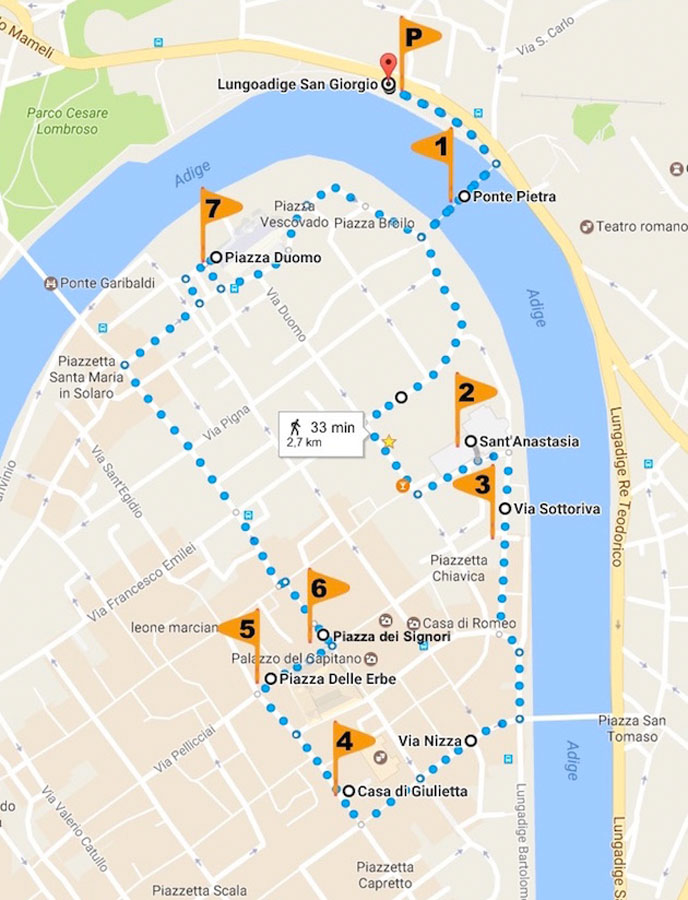
P
Lungoadige San Giorgio
1
Ponte Pietra
2
Santa Anastasia
3
Via Sottoriva
4
Casa di Giuliettai
5
Piazza delle Erbe
6
Piazza dei Signori
7
Piazza Duomo
The church
Google Maps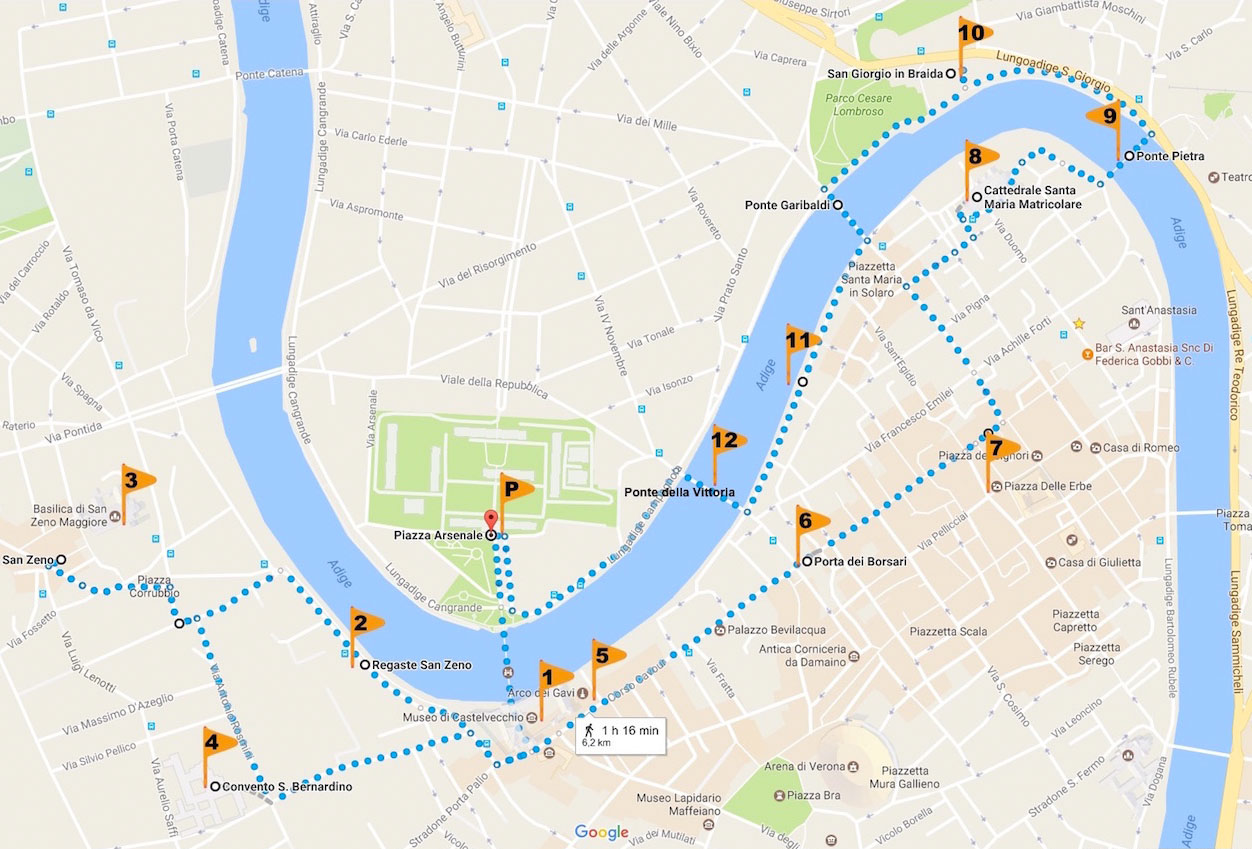
P
Parcheggio Arsenale
1
Castel Vecchio
2
Regaste San Zeno
3
Basilica di San Zeno
4
San Bernardino
5
Arco dei Gavi
6
Porta Borsari
7
Piazza delle Erbe
8
Duomo
9
Ponte Pietra
10
San Giorgio in Braida
11
Lungoadige Panvinio
12
Ponte della Vittoria
Away from chaos
Google Maps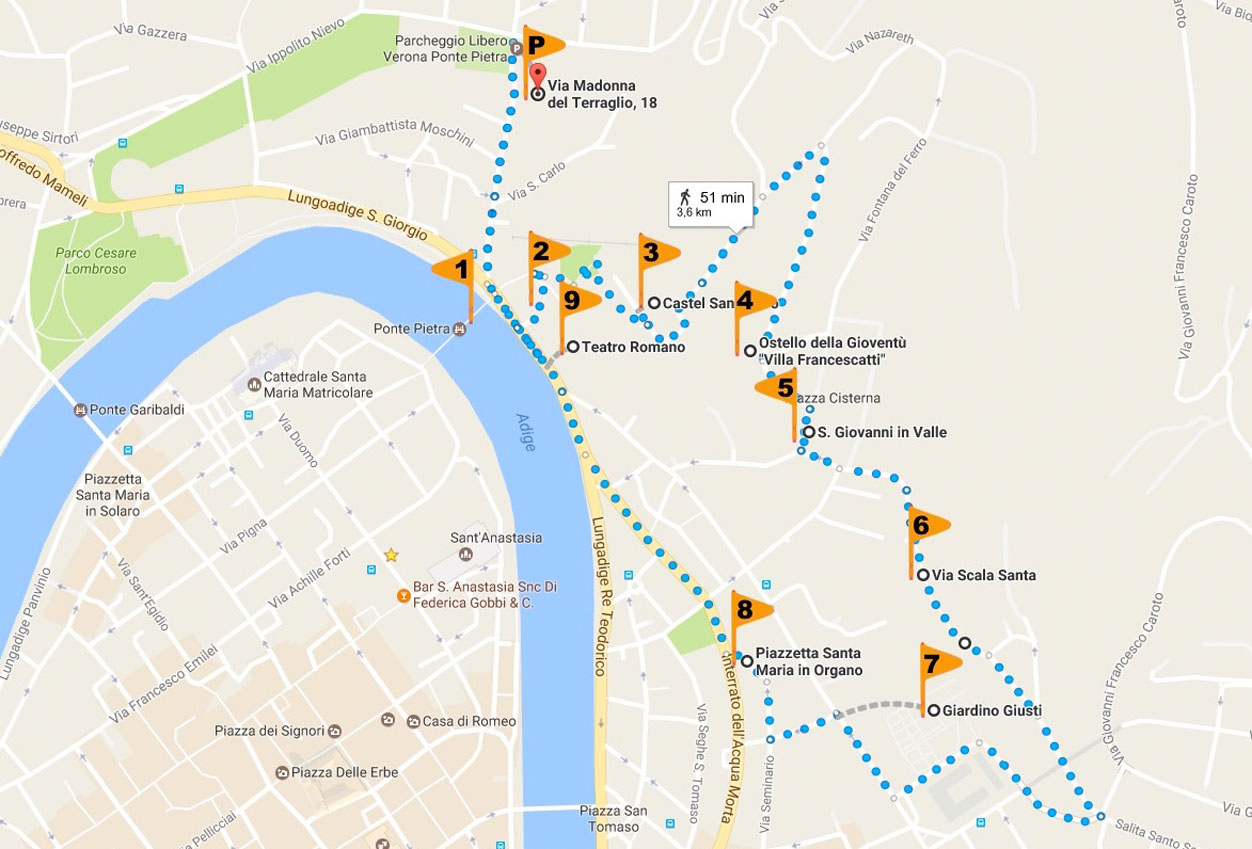
P
Parcheggio gratuito
1
Ponte Pietra
2
Scalinata
3
Castel San Pietro
4
Ostello della Gioventù
5
San Giovanni in Valle
6
Scala Santa
7
Giardino Giusti
8
Santa Maria in Organo
9
Teatro Romano

